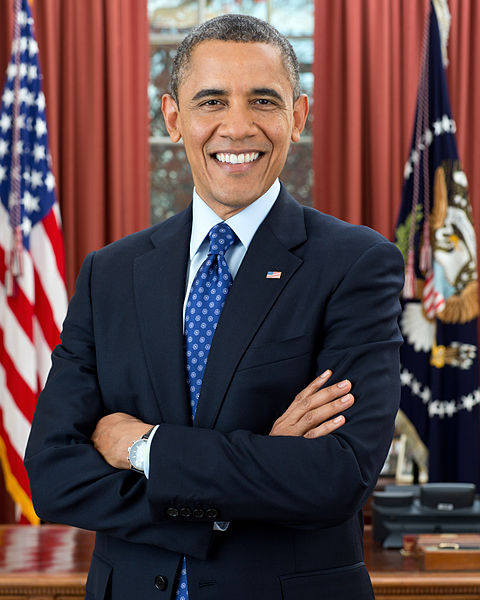The Color of His Presidency

... If you set out to write a classic history of the Obama era, once you had described the historically significant fact of Obama’s election, race would almost disappear from the narrative. The thumbnail sketch of every president’s tenure from Harry Truman through Bill Clinton prominently includes racial conflagrations—desegregation fights over the military and schools, protests over civil-rights legislation, high-profile White House involvement in the expansion or rollback of busing and affirmative action. The policy landscape of the Obama era looks more like it did during the Progressive Era and the New Deal, when Americans fought bitterly over regulation and the scope of government. The racial-policy agenda of the Obama administration has been nearly nonexistent.But if you instead set out to write a social history of the Obama years, one that captured the day-to-day experience of political life, you would find that race has saturated everything as perhaps never before. Hardly a day goes by without a volley and counter-volley of accusations of racial insensitivity and racial hypersensitivity. ...
During the Super Bowl, General Mills ran a commercial depicting an adorable multiracial family bonding over a birth announcement and a bowl of Cheerios. The Cheerios ad was not especially groundbreaking or remarkable. A recent Chevy ad, to take just one other example, features a procession of families, some multiracial or gay, and declares, “While what it means to be a family hasn’t changed, what a family looks like has.” This schmaltzy, feel-good fare expresses the modern American creed, where patriotic tableaux meld old-generation standby images—American soldiers in World War II, small towns, American flags flapping in the breeze—with civil-rights protesters.
What made the Cheerios ad notable was that MSNBC, through its official Twitter account, announced, “Maybe the right wing will hate it, but everyone else will go awww.” It was undeniably true that some elements of the right wing would object to the ad—similar previous ads have provoked angry racist reactions. Still, Republicans felt attacked, and not unreasonably. The enraged chairman of the Republican National Committee declared a boycott on any appearances on the network, and MSNBC quickly apologized and deleted the offending tweet.
Why did this particular tweet, of all things, make Republicans snap? It exposed a sense in which their entire party is being written out of the American civic religion. The inscription of the civil-rights story into the fabric of American history—the elevation of Rosa Parks to a new Paul Revere, Martin Luther King to the pantheon of the Founding Fathers—has, by implication, cast Barack Obama as the contemporary protagonist and Republicans as the villains. The Obama campaign gave its supporters the thrill of historic accomplishment, the sense that they were undertaking something more grand than a campaign, something that would reverberate forever. But in Obama they had not just the material for future Americana stock footage but a live partisan figure. How did they think his presidency would work out?
Even the transformation of the civil-rights struggles of a half-century ago into our shared national heritage rests on more politically awkward underpinnings than we like to admit. As much as our museums and children’s history books and Black History Month celebrations and corporate advertisements sandblast away the rough ideological edges of the civil-rights story, its underlying cast remains. John Lewis is not only a young hero who can be seen in grainy black-and-white footage enduring savage beatings at the hands of white supremacists. He is also a current Democratic member of Congress who, in 2010, reprised his iconic role by marching past screaming right-wing demonstrators while preparing to cast a vote for Obamacare. And, more to the point, the political forces behind segregation did not disappear into thin air. The lineal descendants of the segregationists, and in some cases the segregationists themselves, moved into the Republican Party and its unofficial media outlets, which specialize in stoking fears of black Americans among their audience. (Like when Rush Limbaugh seized on a minor fight between two schoolkids in Illinois to announce, “In Obama’s America, the white kids now get beat up with the black kids cheering.”)
The unresolved tension here concerns the very legitimacy of the contemporary Republican Party. It resembles, in milder form, the sorts of aftershocks that follow a democratic revolution, when the allies of the deposed junta—or ex-Communists in post–Iron Curtain Eastern Europe, or, closer to the bone, white conservatives in post-apartheid South Africa—attempt to reenter a newly democratized polity. South Africa famously created a Truth and Reconciliation Commission, but that was easy—once democracy was in place, the basic shape of the polity was a foregone conclusion. In the United States, the partisan contest still runs very close; the character of our government is very much up for grabs.
And the truth is almost too brutal to be acknowledged. A few months ago, three University of Rochester political scientists—Avidit Acharya, Matthew Blackwell, and Maya Sen—published an astonishing study. They discovered that a strong link exists between the proportion of slaves residing in a southern county in 1860 and the racial conservatism (and voting habits) of its white residents today. The more slave-intensive a southern county was 150 years ago, the more conservative and Republican its contemporary white residents. The authors tested their findings against every plausible control factor—for instance, whether the results could be explained simply by population density—but the correlation held. Higher levels of slave ownership in 1860 made white Southerners more opposed to affirmative action, score higher on the anti-black-affect scale, and more hostile to Democrats....